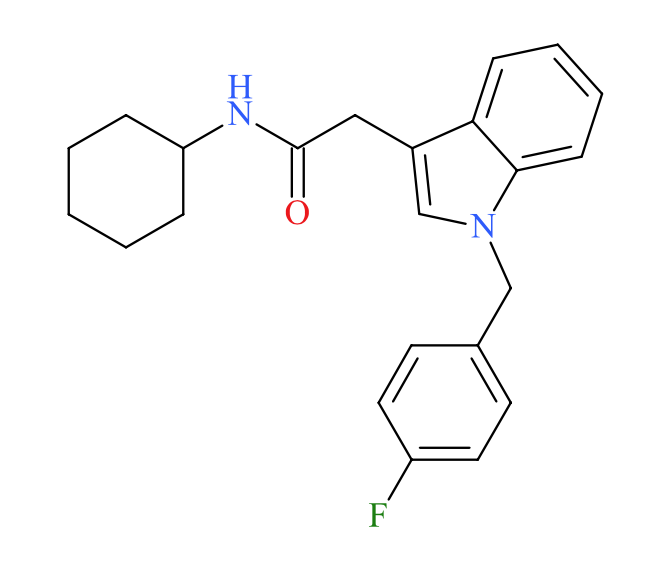CH-FUBIATA
CH-FUBIATA is classified as a synthetic cannabinoid. Synthetic cannabinoids have been reported to cause psychoactive effects similar to delta-9-tetrahydrocannabinol (THC). Synthetic cannabinoids have caused adverse events, including deaths, as described in the literature. Little to no information is currently known about the activity, potency, and/or toxicity of CH- FUBIATA. New synthetic cannabinoids continue to emerge among the recreation drug supply internationally, seemingly as replacements after a synthetic cannabinoid class-wide ban implemented by China in July 2021 which included most traditional indole and indazole structural scaffolds.1 Many of these new synthetic cannabinoid analogues are unstudied with pharmacological and human effects undetermined. Structurally similar synthetic cannabinoids include CH-PIATA (reported April 2022) and ADB-FUBIATA (reported November 2021); CH- FUBIATA was identified alongside ADB-FUBIATA in the sample reported. Currently, CH- FUBIATA and related analogues are not scheduled substances in the United States.
- Class:
- Cannabinoid
- Appearance:
- Plant-Like Material
- Formula:
- C23H25FN2O
- MW:
- 364.5
- [M+]:
- 364
- [M+H]+:
- 365.2024
- IUPAC:
- N-cyclohexyl-2-[1-[(4-fluorophenyl)methyl]indol-3-yl]acetamide
- Report Date:
- June 21, 2022









